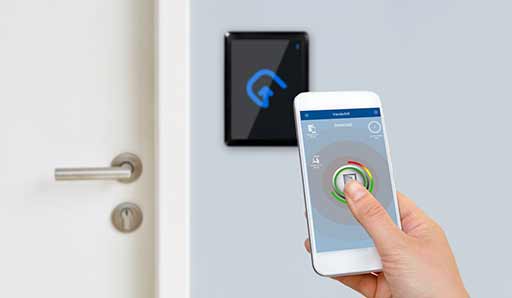
Vanderbilt announced the release of its Bluetooth Low Energy (BLE) readers in conjunction with the company?s ACT Enterprise 2.10 access control software.
In the era of the smartphone, Bluetooth Low Energy (BLE) is transforming the future of access control. BLE technology removes the need for a physical card or tag and replaces it with a secure Bluetooth credential that communicates with the reader to authorize or reject access.
As part of the launch, Vanderbilt is releasing a range of BLE readers, a contactless door release button, virtual credentials available through an ACT Enterprise license, and a free end-user app for Android? and iOS?.
?The Vanderbilt?s BLE readers remove the need for a physical credential and replace it with a virtual credential for smartphone devices that will provide customers with a far and smoother user experience,? said Ross Wilks, Head of Marketing Communications, Vanderbilt.
?Importantly, when it comes to putting customers at the front and center of what we do at Vanderbilt, these mobile credentials are time and cost-effective alternatives to managing physical credentials. This will allow Vanderbilt customers to save not only time, but also money too.
?Again, with a customer-first mindset, mobile credentials are also extensively secure and are protected with the same grade of data encryption used by banks and hospitals. Moreover, our BLE readers can also act as a traditional card reader, meaning users can continue using MIFARE cards and slowly migrate to the Bluetooth virtual credentials at their own pace,? Wilks explains.
A strong indicator of Vanderbilt?s dedicated customer-focused approach to releasing this progressive technology is, in comparison to other brands in this area, the company is offering a one-off license purchase as opposed to a subscription-based model that would include annual charges per virtual credential.
Instead, Vanderbilt?s license models mean its customers won?t have any hidden or extra costs and can make significant savings in the long-term. at Vanderbilt, highlights the ease of use and management of using the BLE readers.
?It is undoubtedly a very straight forward approach that we favored here at Vanderbilt,? said Nadine Frost, Product Manager, Vanderbilt.
?The end user simply downloads the Vanderbilt Bluetooth app, and registers for a credential with the system administrator. Here, authorization can be granted both offline and online.
?The system administrator then reviews and processes the request. This, in turn, sends the end-user a QR code that they save to their smartphone and link to their app to generate their credentials.
Then all the end-user has to do is use the credential through the app on their phone when approaching doors with Vanderbilt BLE readers to gain access. Simple as,? Frost concludes.
Vanderbilt?s BLE readers aim to give a unique user experience with four identification modes for easy management: ?Shake to Go,? ?Show to Go,? ?Manual Button Mode,? and ?Hands Free Mode.? They?re also IP65 water-resistant with waterproof electronics, and easy to install and use with enrollment software in ACT Enterprise.The BLE readers and accessories work exclusively with the new release of ACT Enterprise 2.10.
Vanderbilt is a global provider of security systems recognized for future-proof, high-performance, easy-to-use intrusion detection and access control products. Vanderbilt is an advocate of open platforms and integrations.
Source: vanderbiltindustries.com
